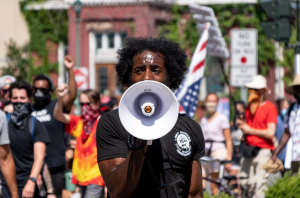The One Thing Midlife Men Must Do to Have a Great Life: Lessons from the World’s Longest Scientific Study of Happiness

Part 2
In Part 1 of this series I introduced you to the work of Robert Waldinger, MD and Marc Schultz, PhD wo are co-directors of the iconic, 86-year-old Harvard Study of Adult Development. In their book, The Good Life: Lessons From the World’s Longest Scientific Study of Happiness, they offer expert guidance on how to live a fully healthy life, to love deeply, and find your passion and purpose in midlife and beyond. I also shared the work of Chip Conley, Founder of the Modern Elder Academy, and what we can learn from his new book, Learning to Love Midlife: 12 Reasons Why Life Gets Better With Age.
In Part 2 I want to introduce you to the three areas where it is most important to apply this wisdom—In our love lives, in our work lives, and our inner lives. In his book, The Three Marriages: Reimagining Work, Self and Relationship, David Whyte says,
“Human beings are creatures of belonging, though they may come to that sense of belonging only through long periods of exile and loneliness.”
Most of us have experienced the feelings of exile and loneliness that Whyte describes. I found Whyte’s description of the three marriages to be very helpful.
“This sense of belonging or not belonging” says Whyte, “is lived out by most people through three principal dynamics:
- “First, through relationship to other people and other living things (particularly and very personally, to one other living, breathing person in relationship or marriage).”
- “Second, through work. Work is not only necessity; good work like a good marriage needs dedication to something larger than our own detailed, everyday needs.
- “Third, perhaps the most difficult marriage of all beneath the two visible, all-too-public marriages of work and relationship—is the internal and often secret marriage to that tricky movable frontier of ourselves.
“These are the three marriages of Work, Self, and Others.”
Like many men, I have had a difficult time achieving success balancing all three “marriages.” I have been most successful in my work life, in some part by writing books about what I learned working through my failures in my love life and my search for my lost self. My first book, Inside Out: Becoming My Own Man detailed my struggles figuring out who I am. The second, book, Looking for Love in All the Wrong Places detailed the confusion I had between “real lasting love” and “sex and love addiction.” The other fifteen books and twelve hundred articles are my continuing journey to learn about, and share, what I’ve learned about integrating all three. Clearly, this is a life-long journey.
One of the primary lessons is that becoming a success in one marriage can’t be automatically transferred to the others. For a long time, I thought if I could become a successful psychotherapist and made a lot of money, I could attract the woman of my dreams and live happily ever after. It didn’t work as you’ll learn if you visit my website and see my introductory video “Confessions of a Twice-Divorced Marriage Counselor.”
Whyte shares a powerful truth in his book.
“Each of these marriages is, at its heart, nonnegotiable; that we should give up the attempt to balance one marriage against another, of, for instance taking away from work to give more time to a partner, or vice versa, and start thinking of each marriage conversing with, questioning or emboldening the other two.”
I learned an important lesson about how these three marriages can be developed an integrated from a Native American basket weaver. She described our life as a basket woven from many different strands, each essential for a strong container. Each part of our life is one strand in this basket. In this case think of each of the three marriages as a strand, each equally important for making a beautiful life basket.
She explained to me that it is impossible to weave multiple strands at the same time; we need to attend to the strand that requires our attention without losing awareness of the others. Every strand will get our attention—just not all at the same time.
Rather than feeling like we are trying to juggle multiple balls of marriage responsibilities and work tasks, while trying to take care of our own needs, and ultimately failing, we can give 100% of our attention to our work when we’re working. When its time for the strand of marriage, we give our full attention to that strand, and later the strand of self. This simple image has helped me relax and flow into the dance of life.
Another thing I came to understand from Whyte is the importance of spending quality time alone, preferably in nature, in order to pursue the illusive lover that is my inner self. In my early life I was always busy pursuing women and success at work so I could attract or hold on to the woman who was the object of my current pursuit. And I was always trying to achieve more power and prestige so that I could prove that I was a man of substance rather than an invisible man I was afraid I really was.
After discussing the importance of doing good work and finding a partner in life, he goes on to discuss the third marriage. “The Tree Marriages,” says Whyte,
“looks at that other equally strange human need, to be left completely and utterly alone, trawling the deep riches of an inner peace and quiet, where the self can actually seem lithe, movable, limitless and inviolate, invulnerable to those invisible wounds delivered by partners and spouses, unharassed by commitment, inured to the clamor of children and untouched by the endless nature of our meetings.”
Only a poet like Whyte could capture the many ways I had become addicted to love and work. Like many men I know, it took losing a marriage or two and being fired from a job or two, to finally take time off to find the inner lover I had abandoned so long ago. For me, I began to get to know my true self on a trip to Alaska when I was thirty-six following the end of my first marriage and a second trip to Alaska with my men’s group when I was fifty-six.
I had to get away from work and women in order find the me I was afraid to see and come to terms with the father wound that I experienced when my mid-life father took an overdose of sleeping pills when I was five years old. Though he didn’t die, our lives were never the same.
I came to understand that my drive to achieve success at work and find the perfect marriage partner was driven, in part, by unhealed trauma from childhood. The Adverse Childhood Experience (ACE) Studies have demonstrated that our early experiences can have a major impact on our adult health and wellbeing. Adverse childhood experiences, or ACEs, are potentially traumatic events that occur in childhood. For example:
- Experiencing violence, abuse, or neglect.
- Living in a home where someone has substance abuse or mental health problems.
- Witnessing violence in the home or community.
- Having a parent who is absent physically or emotionally.
One of the most common, and harmful ACEs, is growing up with an absent father. Psychologist James Hollis says,
“A father may be physically present, but absent in spirit. His absence may be literal through death, divorce or dysfunction, but more often it is a symbolic absence through silence and the inability to transmit what he also may not have learned.”
Roland Warren, former President of National Fatherhood Initiative, says,
“Kids have a hole in their soul in the shape of their dad. And if a father is unwilling or unable to fill that role, it can leave a wound that is not easily healed.”
That was certainly the truth for me. The wound definitely impacted my relationships, my sense of myself, and my work life.
Though I achieved great outward success at work, it felt more addictive than free. My mantra was “too much is not enough.” I always felt I had something to prove in all aspects of my life. Healing the father wound was crucial to the integration of all three of my marriages—to work, to love, and to myself.
Many people who have suffered from Adverse Childhood Experiences and early trauma feel their lives will be forever limited and they will never be truly happy. The good news from the Harvard results, as well as other long-term studies, shows that healing can happen regardless of the difficult early lives. It helps when we can acknowledge our wounds and talk about our experiences rather than trying to forget they ever happened.
In The Good Life, Drs. Waldinger and Schulz conclude, “As adults, the Harvard Study participants who were able to acknowledge challenges and talk about them more openly seemed to have a similar ability to elicit support from others. Being open and clear about one’s experiences offers an opportunity for another person to be helpful.”
Too often, men try to hide their wounds so they can appear strong. We’re terrified of appearing weak and vulnerable. Yet, I’ve found that our vulnerability is our superpower. My wife, Carlin, has often told me that my willingness to be vulnerable is what she most loves and admires about me. Her love has gone a long way to helping me heal from my early losses. She has also said that one of the main reasons we have had a successful forty-four-year marriage is because I have been in a men’s group for forty-five years.
Among the most important findings from the Harvard Studies were that regardless of our early wounds, there were two vitally important things that allowed men to find true happiness and joy: “Meeting a caring friend and marrying an accepting spouse.” Nurturing our friendships and our intimate partnerships takes time and effort, but there is nothing that is more important.
If you would like to read more articles like these, I invite you to subscribe to my free, weekly, newsletter, which you can do here: https://menalive.com/email-newsletter/.







